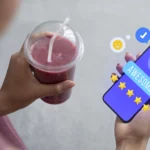In 2025, with AI ads, influencer fatigue, and everyone drowning in digital noise, real recommendations still win. Word-of-mouth remains one of the most effective marketing channels. And the reason is simple. When someone hears about your business from a friend they trust, it hits way harder than any Facebook ad or SEO blog ever could.
That’s why we will show you how to set up a referral program for your brick-and-mortar business. No matter if it’s a gym, salon, or wellness studio. If you don’t have time for complicated marketing funnels but still want fast, steady growth, this guide is for you.
What Is a Referral Program?
A referral program is a system where you reward people for spreading the word about your business and bringing new customers to you. Those people can be your existing customers, employees, or partners.
The key to a referral program is not to look at it as a favor, but to frame it as a win-win situation for both sides.
Why Does a Referral Program Work?
When making a purchase decision, people prefer recommendations that come from friends and family over other marketing channels. Most importantly, people who learn about your business through referral marketing are not cold leads. They’re already pre-sold by someone they trust.
So this means:
- Less hesitation
- Less price shopping
- Fewer objections
- Higher satisfaction
- Less work on your end
Referral Program Statistics That Matter
If you’re planning to set up a referral program, these statistics will convince you to do it as soon as possible:
- 92% of people trust referrals from people they know
- Referred customers convert up to 4x more than through other channels
- They’re 37% more likely to make another purchase
- And they’re more likely to refer others, creating a growth loop
Types of Referral Programs
You can run a referral program in a few different ways, depending on your setup and goals. Here are the big three:
Customer to a Friend Referral Program
This is the most common. Your customer sends a friend, the friend signs up or buys something, and both get rewarded. It’s simple, scalable, and perfect for gyms, salons, wellness clinics, and most local businesses.
Example:
- “Bring a friend, and you both get $20 off your next visit.”
B2B Referral Program
This works great if you have local businesses or influencers who want to refer people your way. You give them a unique link or code and pay them per referral or sale.
Example:
- A local yoga instructor refers clients to your massage clinic and gets $15 per new customer.
Employee Referral Program
Your team is on the front lines. If they love where they work, they’ll happily bring in new clients or even new hires. Give them a reason to.
Example:
- “Get $50 for every new member you bring in. Get $100 if they stay 3 months.”
How to Set Up a Referral Program
A good referral program isn’t just about giving away free stuff. Instead, it grows your business. That starts with a smart, simple strategy.
Define the Goals of a Referral Program
Pick one primary goal. Yes, referrals do a lot, but if you try to chase everything at once, you’ll get nowhere. Here are the most common (and useful) goals:
- Customer Acquisition: Bring in brand-new customers.
- Repeat Visits: Keep current customers coming back more often.
- Higher AOV (Average Order Value): Encourage bigger purchases.
Once you’ve locked in your #1 goal, shape your rewards and rules to support that. Example: if you want more visits, don’t offer a reward that only triggers after a big spend. Reward visits.
Find Your Target Group
Not all customers are great referrers. And not all potential leads are worth chasing.
Think about who already loves your business and talks about it:
- Longtime regulars
- High-spending clients
- Raving reviewers
- Social butterflies with a local following
These people already trust you and are likely to refer quality customers who fit your vibe.
Also, think about who you want to attract. If your goal is more premium service bookings, target referrers who already buy those services.
Referral Incentives
Your rewards have to matter. Boring incentives don’t bring action. But don’t overthink it. You’ve got two big decisions to make here:
Single-Sided vs. Double-Sided
- Single-Sided: Only the referrer gets a reward. Easier to manage, but not always as motivating.
- Double-Sided: Both the referrer and their friend get something. This works better because it removes friction. The referrer feels good offering value, and the friend feels welcomed.
Our tip: Unless you’re doing partner or employee referrals, go double-sided. It just works better for customer programs.
Reward Types
- Cash or Credit: Works well, but feels transactional. Better for services with high margins.
- Perks or Freebies: Think free classes, upgrades, exclusive merch, or a surprise gift. Feels more “insider” and builds brand love.
- VIP Access: Unlock private events, first dibs on sales, or members-only benefits. Great for high-end or lifestyle brands.
Match the reward to your customer’s motivation. Gym member? A free personal training session beats $10 cash. Salon client? Early booking access might be the real prize.
Tips for Referral Program Rules
Nobody’s reading a novel. Keep your program simple enough to explain in 15 seconds.
- Who can refer?
- Who qualifies as a referral?
- What’s the reward?
- How do they claim it?
Stick it all on one clean page. It should be on your website, in your emails, maybe even on your front desk. If someone has to ask five questions to understand the rules, they won’t bother referring to anyone.
Customer Referral Journey
From the moment someone hears about it to the moment they get rewarded, the process needs to feel smooth, easy, and worth it. Here’s how to map the journey so it actually works and how Referrizer helps at every step.
| Stage | Goal | Tactics | Referrizer Feature |
| Awareness | “I know a program exists” | In-store signage, checkout pop-ups | QR codes, on-site widgets |
| Enrollment | Quick opt-in | One-click join links | CRM integration, SMS keyword |
| Sharing | Effortless invites | Email, SMS, social, unique links | Multi-channel send |
| Conversion | Tracking leads | Auto-tagged links & cookies | Real-time dashboard |
Each stage of the referral journey is a chance to either build momentum or lose it. With the right tools and a smooth experience, you turn happy customers into unstoppable growth engines. Referrizer makes it super easy.
Manual vs. Automated Referral Marketing Tools
If you want a referral program that actually scales (without becoming a second job), you need the right software behind it.
The Cons of the Manual Referral Program
- Tracking Chaos: You’re juggling spreadsheets, screenshots, and sticky notes. Things will get missed.
- No Real-Time Visibility: You have no idea if a referral converted until someone tells you or complains.
- Coupon Abuse: Codes get reused, shared, or faked. You end up handing out discounts for nothing.
- Zero Integration: Your staff has to hop between systems, which means more mistakes and slower service.
Must-Have Referral Program Features
- CRM/POS Integrations: Automatically track referrals, purchases, and redemptions without any manual entry. Your referral engine should talk to your check-in system, your sales dashboard, and your calendar.
- Fraud & Duplicate Detection: Make sure rewards only go to legit, one-time referrals. Good software blocks fake emails, self-referrals, and repeats from the same person.
- Multi-Location Reporting: If you have more than one location, you need to know what’s working where. Get visibility across your entire business in one clean dashboard.
Why Small Businesses Pick Referrizer
Referrizer was built specifically for brick-and-mortar businesses. It’s not bloated, not confusing, and doesn’t require a tech team to set up.
Here’s why it’s the go-to choice for small businesses:
- Integrates with Popular Tools: Works seamlessly with Mindbody, Club Ready, Booker, and other platforms you already use.
- Built-in SMS and Email Automation: Send invites, reminders, and reward notifications automatically without lifting a finger.
- Review Booster & Loyalty Program Add-Ons: Referrizer doesn’t just do referrals. It helps you stack trust and retention too, by prompting for reviews and rewarding loyal customers, all in the same platform.
How to Promote a Referral Program
Even the best referral program is useless if nobody knows about it. Here’s how to promote your referral program.
Front-Desk Scripts for Staff
Your team is the first line of promotion. But they need clear and effective scripts.
Example script for check-ins or after service:
“Hey, just so you know, we’ve got a referral program now. If you refer a friend, you both get $20 off. I can show you how it works. It only takes a sec.”
Script for new customer onboarding:
“Thanks for joining us! You’ll get a welcome text in a few minutes with your personal referral link. Share it with friends, and you’ll both get rewarded.”
Receipt & Thank-You Page CTAs
Turn every transaction into a referral opportunity.
- Receipts: Add a line that says, “Refer a friend, get $10 credit. Details here [shortlink/QR code]”
- Thank-You Pages (after booking, purchasing, reviewing): Drop a clear CTA and a referral link right there.
People are most likely to share when they’ve just had a good experience. Catch them at the right moment.
Email Blast + Text Blast Templates
You don’t need a fancy design. Just clarity and timing.
Email Template:
Subject: 🎁 Your friends get $20, and so do you
Body:
Love [Business Name]? Invite your friends. They get $20 off. You get $20 back.
It’s easy, just share your unique link:
👉 [Referral Link]
Text Blast Template:
“Refer a friend, get $20! They get $20 too. Share your link now: [Referral Link]”
Local Partnerships & Co-Promos
Team up with other local businesses to expand your reach and drive cross-referrals.
- A yoga studio and a juice bar can refer to each other.
- A hair salon and a nail studio can offer combo rewards.
- A dentist and a fitness studio can run a healthy-habit referral drive.
Check out our comprehensive referral program template.
Final Thoughts
Referral marketing isn’t a someday project, it’s a right-now opportunity. In 2025, when trust is hard to earn and attention is even harder to buy, real-world recommendations still crush every other channel.
The best part? You don’t need a marketing degree or a full-time team to launch something powerful. With the right tools (like Referrizer) and a clear plan, you could set up a referral program in one afternoon and start seeing results by tomorrow.





